Must-Know Furniture: The Hoosier Cabinet
http://decor-ideas.org 01/24/2015 01:13 Decor Ideas
A Hoosier cabinet is a freestanding kitchen workhorse that was popular in the first half of the 20th century. So much more than just a storage cabinet, this versatile piece was outfitted with a flour sifter and more. Today the Hoosier cabinet can be an efficient, functional addition to any kitchen.
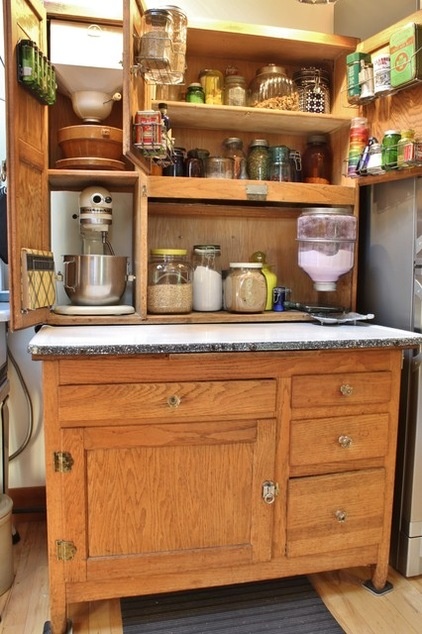
My family hails from Indiana, and one of my fondest memories was the oak Hoosier cabinet in my grandma’s dining room. I loved its many little cabinets and drawers and its old-time feel — and because it happened to be where she kept her cookie jar.
Here’s what to know about the classic piece.

Where does the term “Hoosier” come from? We can’t talk about the Hoosier cabinet without first touching on the term “Hoosier.” It has been tied to the state of Indiana for some 150 years, and there are several theories about its origin. One involves people yelling, “Who’s there?” across the Ohio River, and its sounding like “Hoosier.” Another is that a man lost his ear in a bar fight, and some unlucky person picked it up and asked, “Whose ear?” While its true roots remain a mystery, the term “Hoosier” and Indiana are forever intertwined.
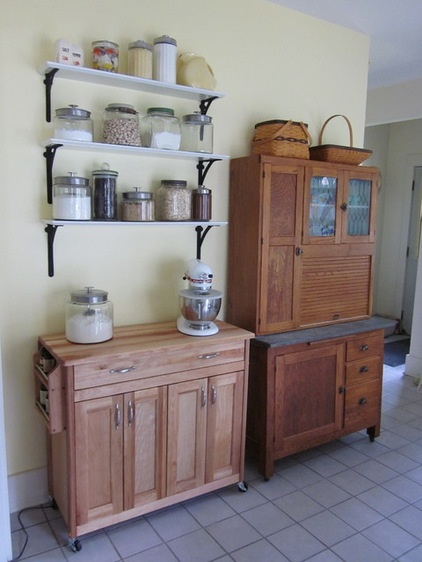
Hoosier cabinets are so named because most of them were made in Indiana. The first Hoosier cabinets appeared in 1898, made by a furniture company called Sellers, based in New Castle, Indiana. Between 1899 and 1949, there were about 40 different manufacturers of Hoosier cabinets. However, the top two companies were Sellers and the Hoosier Manufacturing Company. McDougall, Boone, Nappanee and Wilson were also popular Hoosier cabinet manufacturers. (Wilson was in Michigan.)
The popularity of the Hoosier cabinet started to wane in the late 1940s. That’s when manufacturing records for the cabinets became scarce, says Brandon Fyffe, manager at Kennedy Hardware in Zionsville, Indiana, which supplies about every Hoosier cabinet replacement part you can think of. (Fyffe’s grandfather also wrote the book Hoosier Cabinets.) A modernizing world with built-in kitchen cabinets is the likely reason for the decline, as there wasn’t as much need for them.
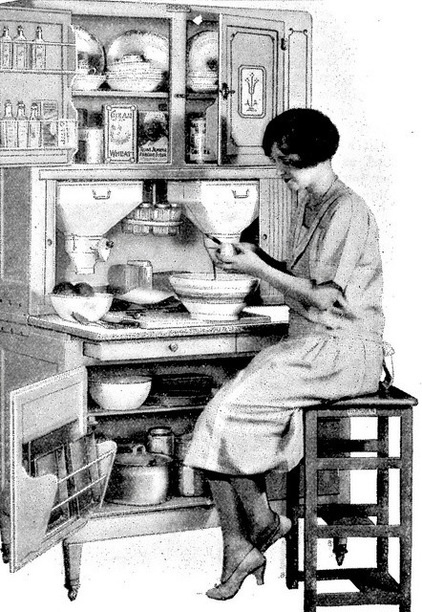
What makes a Hoosier cabinet so special? You might think they’re just simple cupboards, but they’re so much more. Yes, they store staples like flour, sugar and spices, and utensils. However, they also have workable parts inside, like flour sifters, meat grinders and rotating spice carousels. Some have fold-down ironing boards. The niftiest part is the tabletop surface that slides outward to provide more work surface.
“Hoosier cabinets were made to handle all of the bustle in the kitchen,” Fyffe says. “You could do all your work there, except cook your food. It was a matter of saving steps and making life easier, which is where the phrase ‘Hoosier saves steps’ comes from.”
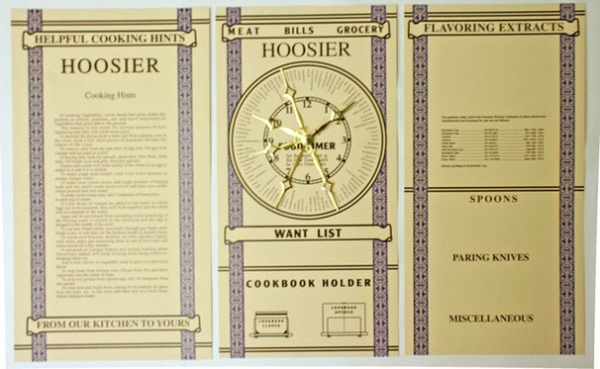
More clever accessories. Probably lost on most surviving cabinets are the door charts that originally came with them. They vary by manufacturer, but many include household stain removal advice, cooking tips and food pyramid suggestions for balanced meals. Fyffe notes that the Hoosier Manufacturing Company’s door chart has a clock and food timer card. Kennedy Hardware’s exact replica of the original is shown here.
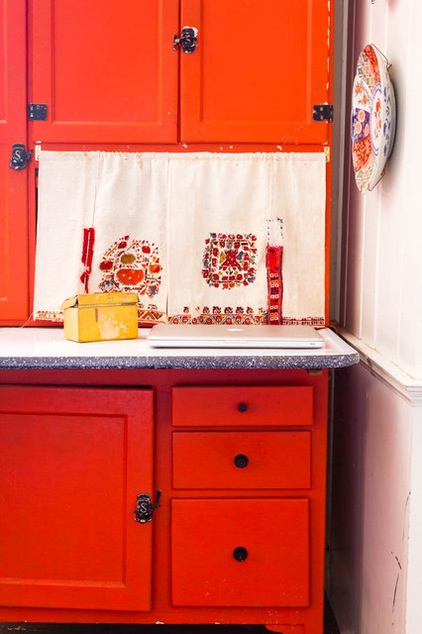
Hoosier cabinet materials. Hoosier cabinets are made of wood. Oak was the most prevalent wood species used, but a scarcity in the supply later forced manufacturers to use any type of wood they could. “That is why you start to see painted cabinets in the later years,” Fyffe says. “It was to hide the different woods that were used. It was not uncommon to see a cabinet that would have three or four different wood species.”
Worktops were made of wood, zinc and porcelain. Porcelain, shown here, is the most common worktop material and what people usually associate with Hoosier cabinets.
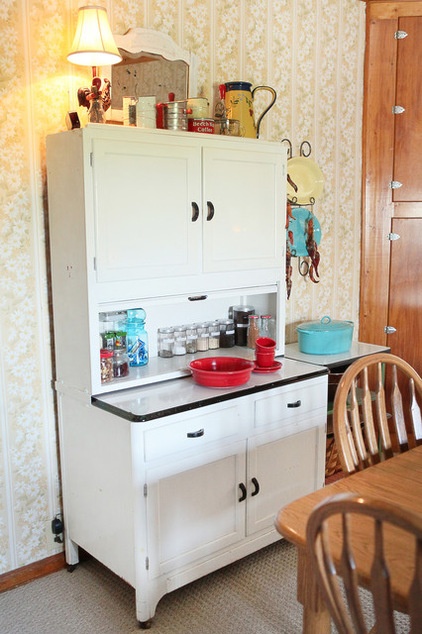
As relevant today as yesterday. A Hoosier cabinet works especially well in older homes that probably have smaller kitchens and are short on storage. This one appears to get a lot of use in this 1930s Columbus, Ohio, farmhouse.
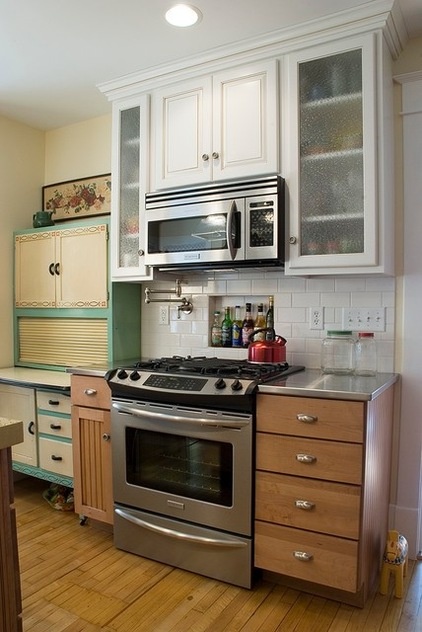
Kitchen designer Marilyn Terlouw, of Kitchen Concepts, says her client purchased this yellow and green Hoosier cabinet at a local antique mall — a nostalgic reminder of one her grandmother used.
Terlouw says her client wanted a kitchen with modern conveniences, but one that would also blend with the older house and antiques. “We used some open shelves and different products along with the antiques so it wasn’t so matchy and had an unfitted look to it,” she says. “They didn’t want to have everything the same.”
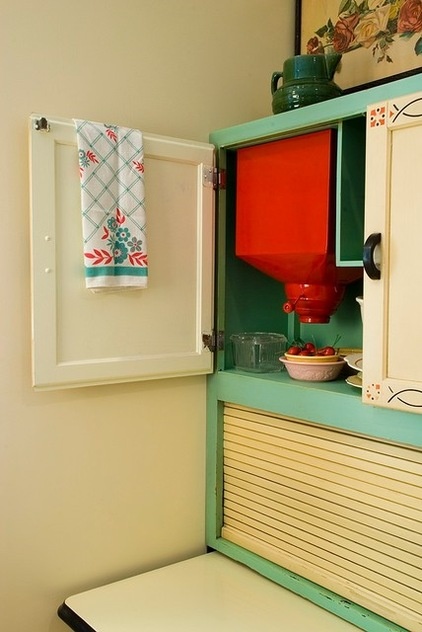
The Hoosier cabinet in Terlouw’s project still has the flour mill with sifter. A pie safe they painted red and colorful vintage tea towels tie the kitchen space together.
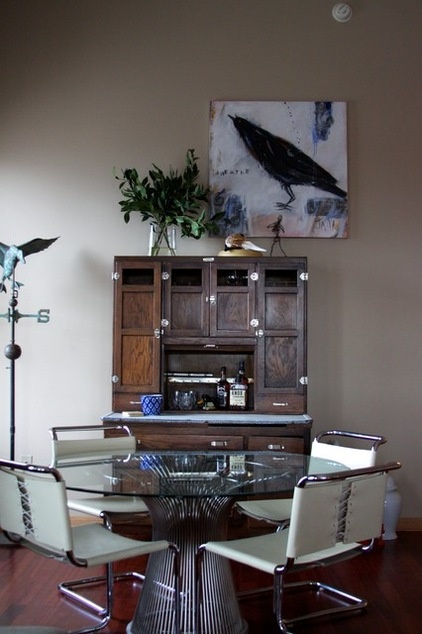
Hoosier cabinets don’t work only in vintage or farmhouse-style kitchens. They can also mix well with other furniture genres, as seen here in this more modern dining room. However, I wouldn’t expect to see a Hoosier cabinet venture too far from the kitchen or dining room. With its kitchen-y aesthetic, it could look dramatically out of place somewhere else.
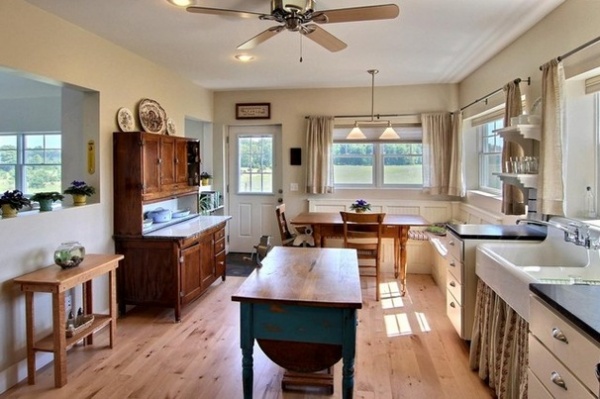
Where to buy Hoosier cabinets. Hoosier cabinets, Fyffe says, are hard to find, except by chance. Garage sales and antiques stores are your best bet. Some online sites, like eBay and Houzz, sell vintage Hoosier cabinets too.
If antique isn’t your thing, but you like Hoosier cabinets, you can make a new one yourself. There are woodworking plans for Hoosier cabinets out there. American Woodworker published a how-to guide by Tim Johnson in its December 1999 issue.
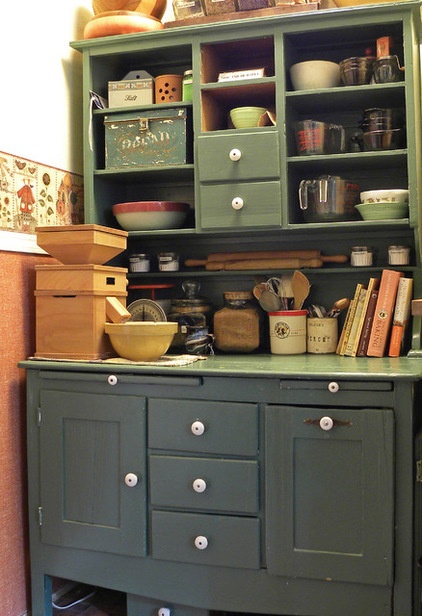
How much does a Hoosier cabinet cost? Expect to pay $500 to $1,200 for a cabinet in good shape. In the 1990s, Fyffe recalls, it wasn’t uncommon to see them sell for more than $3,500. “As most antiques make rotations, I hope that someday these cabinets will come back full circle and give many more people the love of owning a part of history,” he says.
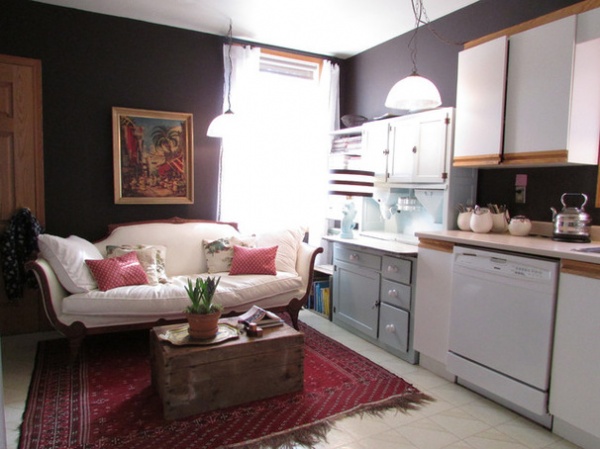
Restoration resources. If you’re inspired to restore your Hoosier cabinet to more closely resemble its original appearance and function, below are links to two useful resources. Both sell reproduction hardware and accessories to replace pieces that have been removed or don’t work, such as bread bins and flour sifters.
Kennedy Hardware, in Zionsville, Indiana. Kennedy Hardware also manufactures some of its wood Hoosier cabinet products. Fyffe shares that he personally makes every tambour door they sell.Hardware of the Past, in St. Charles, Missouri.
More:
Must-Know Furniture: The Wingback Chair
A Beginner’s Mini Guide to Buying Antiques
Related Articles Recommended












